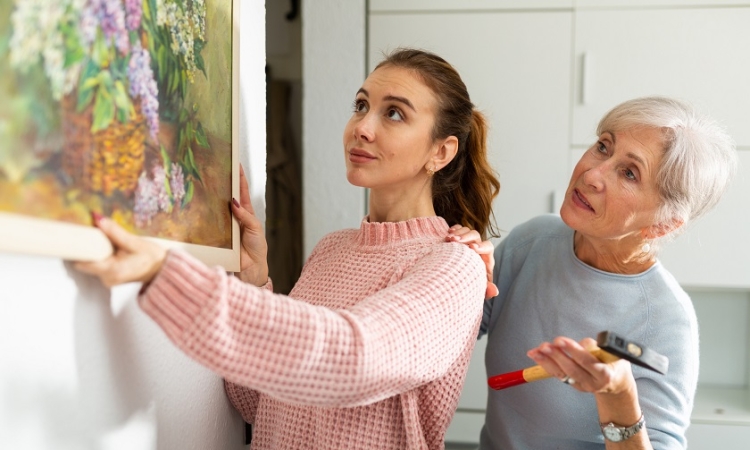By Steve Gurney, Founder, Positive Aging Community
This is the final post in our four-part series on helping seniors move to a new home. In previous posts, we discussed the moving options available to older adults, the factors that influence older adults to move, and how to prepare seniors to move. In this post, we’ll focus on what happens after the move.
Whether your senior loved one is downsizing to a new house or entering an assisted living facility, the decision to move is a big deal, one that’s laden with emotional complexity. Here are some things you can do to help with Elderly Relocation and assist older adults in adjusting:
1. Make it safe to share feelings
Some older adults are so worried about becoming a burden to their loved ones that they have trouble sharing their fears and anxieties about moving to a new home. It may be up to you then, to let them know it’s okay to express how they feel in the face of an uncertain transition. Be patient and have empathy as they adjust to a new environment. Showing that you understand and care about how they feel will remind them that they may have changed homes, but they haven’t lost the relationships that matter most to them in life.
2. Visit soon after the move
 One way to help seniors feel at home is to visit them in person soon after they move. The opportunity to have guests helps establish that a new space is not just a waystation but a home that belongs to them. This is true even if they have moved into a room in your home. By visiting them in their designated space, with their permission, you help them recover the feeling of ownership they had when they were living on their own.
One way to help seniors feel at home is to visit them in person soon after they move. The opportunity to have guests helps establish that a new space is not just a waystation but a home that belongs to them. This is true even if they have moved into a room in your home. By visiting them in their designated space, with their permission, you help them recover the feeling of ownership they had when they were living on their own.
Another good reason to visit them early after the move is that they might be lonely. Your visits help ease the transition period as they make new friends, establish new social networks, and settle into new routines.
3. Be there, virtually
If you live too far away to visit in person on a regular basis, you can still stay connected in other ways. During the COVID-19 pandemic, people found ways to maintain virtual relationships with their older loved ones that you could incorporate anytime. For example, this NPR post crowdsources useful suggestions, like sending a weekly postcards, organizing virtual dinners and TV watch parties, and more.
4. Encourage them to make friends
Older adults who move may experience anxiety, stress, moodiness, and other symptoms of relocation stress syndrome. Relocating to a new home can lead to withdrawal from society and premature death, among other consequences. That’s why it’s so important that they stay active and involved in their communities, wherever they may be.
You can help by reminding them that it’s never too late to make new friends. If they don’t know where to start, present them with a list of volunteer activities they might enjoy. Volunteering is a great way to meet new people and maintain a sense of purpose.
For some seniors, it’s easier to start anew with people they have a history with than to make friends from scratch. In that case, you could encourage them reconnect with friends and family members with whom they’ve lost touch but would like to hear from again. Remind them that people who were close will drift apart, but as they get older, circumstances change, and all it takes is for one person to reach out to the other.
5. Help decorate their new home
Before most seniors move, they downsize. They sell or give away the possessions they don’t want, taking only their most important keepsakes with them. That doesn’t mean they already have everything they need. Depending on the size and layout of their new home, they may need new furniture, curtains, artwork, and other items to turn their space into a home. To help them adjust, make interior decorating a project you can work on together.
You can be especially helpful when older adults move into assisted living facilities, where your decorating options may be constrained. Still, you can make sure the space is well-lit with bright lamps, and you can make it feel better by hanging mirrors, photos, or artwork. For more ideas, check out these decorating tips to make assisted living feel like home.
About the Author
Today, we are joined by guest author, Steve Gurney from PositiveAging Community. In 1990, Steve founded PositiveAging Sourcebook, a comprehensive listing of every retirement community, assisted living, nursing and rehab center, and home care options in DC, Northern Virginia, and Suburban Maryland. The PositiveAging Community makes finding housing, aging in place solutions, and resources more convenient by connecting older adults, families, and providers via the most comprehensive and trusted resources in print and digital formats.


